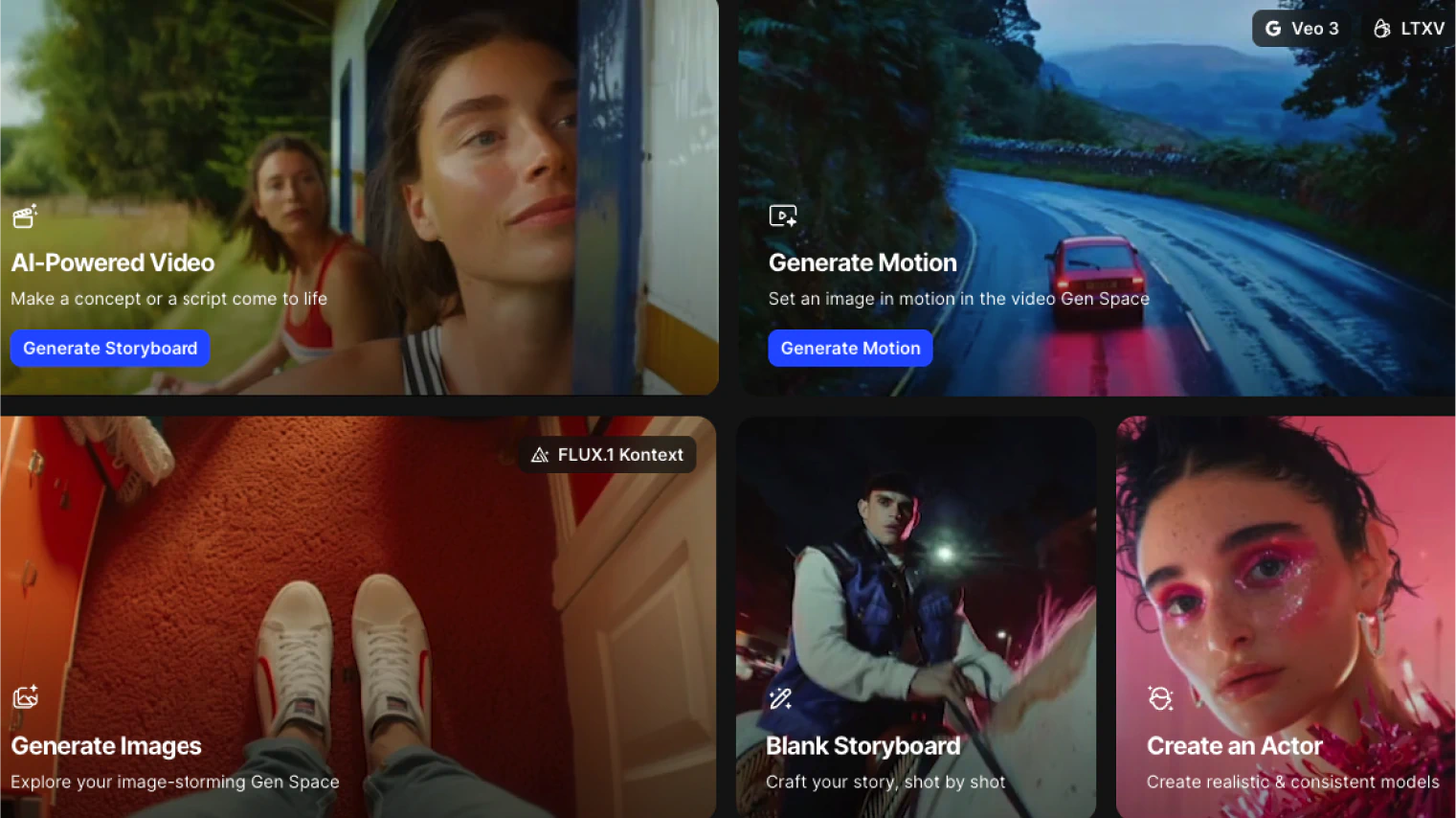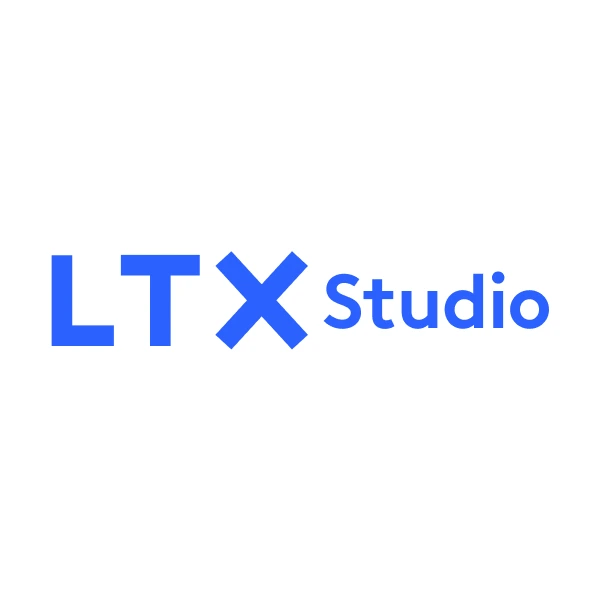Gollum crawls through Middle-earth. Avatar’s Na’vi inhabit Pandora. Thanos snaps his fingers. None exist physically. All live through CGI. Computer-generated imagery turns impossible visions into cinematic reality.
What is CGI and how can tools like LTX democratize digital visual creation? Let’s dive into the tech behind modern blockbusters.
{{blog-banner-video05}}
What is CGI (Computer Generated Imagery)?
CGI stands for Computer Generated Imagery—digital visuals created using computer software to enhance or replace what’s captured on camera. It creates characters, environments and effects that don’t exist physically. CGI ranges from subtle enhancements to entirely digital worlds.
CGI matters because it enables impossible storytelling. Filmmakers create fantasy creatures, sci-fi worlds and danger without physical limitations. The tech has expanded cinema’s creative possibilities infinitely.
Modern blockbusters rely heavily on CGI. Avatar used over 60% computer-generated imagery. Marvel films build entire universes digitally. It’s the dominant force in filmmaking.
CGI Meaning
The CGI meaning includes all computer-generated visual content in films, TV and video. It covers 3D models, digital environments, simulated effects and virtual characters. CGI is the digital revolution in visual storytelling.
Knowing what CGI means reveals it’s basically digital creation replacing physical construction. Traditional filmmaking builds physical sets and props. CGI builds everything digitally then composites into footage.
CGI is different from VFX though terms overlap. VFX is the broader category including all visual effects. CGI specifically refers to computer-generated elements within VFX work.
How Does CGI Work?
CGI works through a multi-step digital process to create photorealistic imagery.
3D modeling creates digital objects and characters. Artists sculpt virtual geometry defining shapes and forms. Models contain detailed surface information and structural data.
Texturing applies surface details to models. Artists paint digital textures simulating materials like skin, metal or fabric. Textures add visual realism to geometric forms.
Rigging builds internal skeletons for movement. Technical artists create control systems for animation. Rigs allow characters to move naturally and expressively.
Animation brings models to life through movement. Animators pose characters using keyframes. Software interpolates between poses to create fluid motion.
Lighting illuminates digital scenes to match live-action footage. Artists position virtual lights to create shadows and highlights. Proper lighting integrates CGI elements believably.
Rendering turns 3D data into final 2D images. Computers calculate how light interacts with surfaces. High-quality renders require a lot of processing power and time.
Compositing combines CGI with live-action footage. Artists blend elements together to match color and perspective. The final composite looks photoreal.
What is CGI in Animation?
CGI in animation means computer-generated animated films entirely created digitally. Unlike live-action CGI composited with footage, CGI animation builds everything in computers. Pixar and DreamWorks do CGI animation.
CGI animation gives complete creative control over visuals. Every element from characters to environments is designed digitally. Animators aren’t limited by the physical world.
The process is different from traditional animation. Hand-drawn animation draws each frame. CGI animation poses 3D models. Computer interpolates movement between poses.
CGI Examples
Notable CGI examples show the tech’s evolution and capabilities.
Jurassic Park (1993) revolutionized CGI with photorealistic dinosaurs. ILM’s digital creatures moved convincingly with actors. The film proved CGI could create believable organic life.
Toy Story (1995) was the first fully CGI feature film. Pixar showed computer animation could be entertaining. The success launched the CGI animation industry.
Avatar (2009) pushed CGI boundaries with performance capture. James Cameron created an entire alien world digitally. The film showed CGI’s world-building capabilities.
The Lord of the Rings trilogy brought Gollum to life through CGI and motion capture. Andy Serkis’ performance drove the digital character. The films demonstrated CGI character emotional depth.
Marvel Cinematic Universe relies heavily on CGI for superheroes and action. Digital environments, powers and creatures dominate visual storytelling. The franchise proves CGI’s commercial dominance.
CGI History
CGI history goes from experiments to industry standard.
Early experiments (1970s) started with Westworld and Futureworld featuring first 3D-rendered scenes. Tron (1982) showed a stylized digital world. These pioneers proved CGI’s cinematic potential.
Breakthrough era (1990s) saw Terminator 2 and Jurassic Park show photorealistic CGI. The tech became viable for mainstream filmmaking. Studios invested big in digital capabilities.
Animation revolution (1995-2000s) launched with Toy Story proving CGI animation was viable. Pixar, DreamWorks and Blue Sky established the CGI animation industry. The medium dominated family entertainment.
Modern integration (2000s-present) CGI is used in all productions. Digital intermediate workflows, virtual production and real-time rendering. CGI went from expensive specialty to everyday tool.
Creating CGI-Style Content with LTX

LTX Studio lets creators make CGI-like visuals without 3D software expertise.
Generate digital characters and environments with AI. Create 3D-style content without modeling or rigging. We handle the technical complexity for you.
Apply 3D animation styles to your projects. Generate content that looks like CGI. Try different rendering styles.
Create VFX sequences combining digital elements with other content. Build impossible scenes and fantastical visuals. Focus on the creative vision not the technical pipeline.
Use storyboarding to plan CGI sequences. Visualize digital effects before generation. Test how CGI elements fit into your story.
This makes professional CGI accessible to all. Independent filmmakers can make blockbuster visuals without render farms or specialized software.
Conclusion
CGI changed filmmaking by making the impossible possible. From digital characters to entire worlds, CGI expanded the boundaries of cinema. From rare specialty to industry standard.
With LTX you can make CGI-like visuals with AI-powered tools. Modern platforms remove the complexity of traditional CGI and deliver professional digital content for all creators.
Heading
November 16, 2025


















.png)





